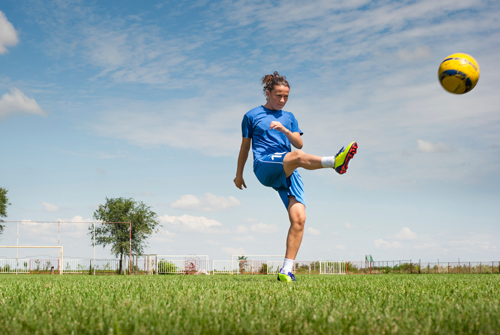
While any athletic activity has an inherent risk of injury, soccer has traditionally been considered less dangerous than, say, American football, hockey and lacrosse. Significant tragic events in soccer usually involve the goalposts; either the player hits the post or a faulty goalpost lands on a player. Fortunately, these events are extremely rare. Still, some dangers exist in soccer. Tackling probably produces more injuries than any other activity in soccer. Players can be hurt when their feet get stepped on while lighting for the ball, and players often receive hard kicks to the shin during tackling. But the most frequent injuries involve the knee, including the anterior cruciate ligament, (ACL). Female soccer players are at least twice as likely to tear the ACL as are their male counterparts.
Although these injuries are not life threatening, they can end a player’s season; occasionally, they can end a player’s career. The good news is that injuries tend to become less frequent as players gain more skill and experience playing the sport. We can recommend a training program to prepare soccer players for the rigors of soccer competition. A training program will include
- Stretching and warm-up exercises to loosen muscles and raise body temperature, which help to prepare the body for physical activity
- A year-round strength-training program, with special emphasis on balancing the muscles of the leg and targeting the core muscles (low back, abdominal and hip), to effectively reduce soccer-related injuries
- Balance training to reduce ankle and knee injuries
- Jump training to teach proper landing form
- Aerobic exercises to prevent the fatigue late in a match that can lead to injury
The key to injury reduction is understanding the sport of soccer and preparing your body for it. While it may not prevent all soccer injuries, an exercise program can reduce risk and enhance athletic performance. Your physical therapist can design a program that addresses soccer’s demands on the body.










